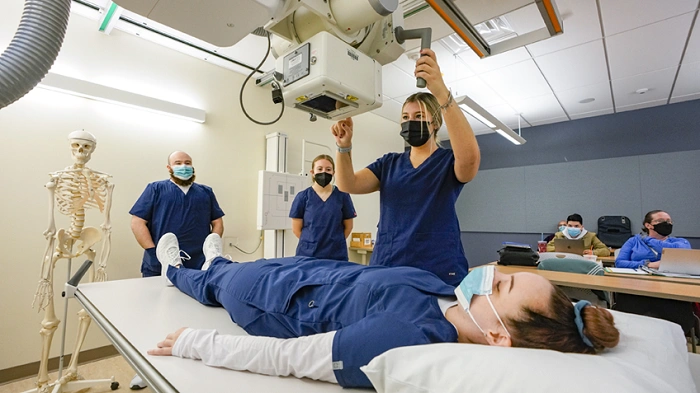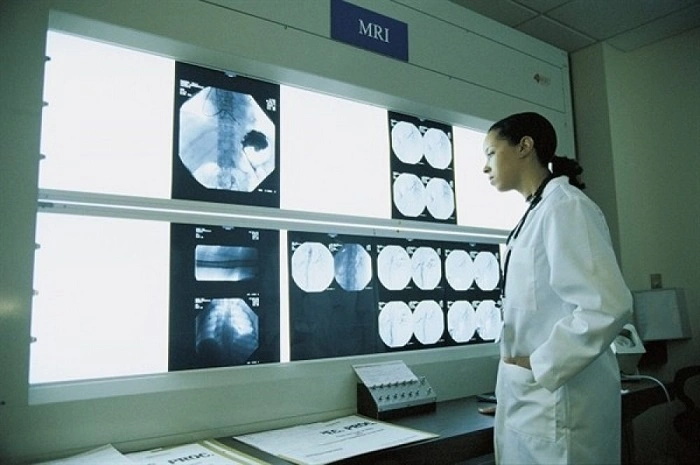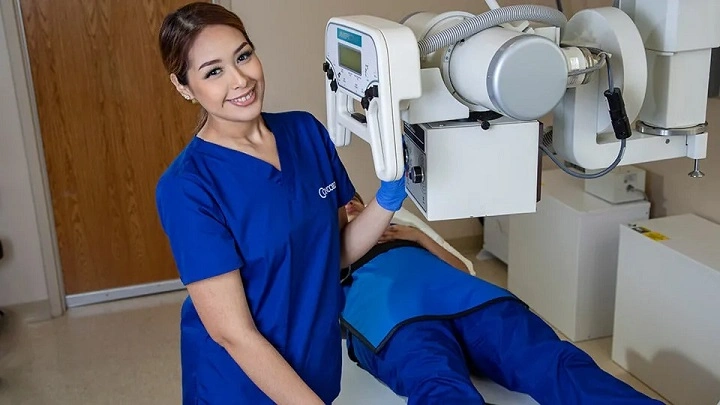Did you ever visit the hospital and have an X-ray, CT, or MRI? Behind the uncomplicated pictures is a trained professional in the guise of radiologic technologist, or more colloquially a “rad tech.” They go through radiology tech schools, where they are taught to use imaging equipment, drape patients, and assist physicians to diagnose disease.
Radiology tech school is where you need to head if you want to be involved in this very rewarding and growing field of medicine. In this article, we shall be sharing with you what radiology tech schools are, how you can become enrolled in them, what the careers entail, and why this career shall be the best thing that has ever happened to you.
What is Radiology Tech School?
Radiology tech school is a schooling program that instructs students on how to become radiologic technologists. Radiology tech schools exist in:
- Community colleges
- Technical schools
- Universities
- Hospital training programs
Radiology tech school will equip you for:
- Working medical imaging equipment like X-ray, CT, and MRI machines
- Patient screening to save them from unnecessary radiation exposure
- Working with physicians to diagnose disease and injury
- Giving compassionate patient care
After graduating, you will typically be eligible to take a certification exam. You can work at an imaging center, hospital, or clinic.
Why Attend Radiology Tech School?

Students attend school for this profession for two main reasons:
- High demand: Since more individuals require healthcare, there is greater need for competent rad techs.
- Good compensation: Radiology techs tend to have a good-paying job with benefits.
- Less training: It requires less training than doctors and nurses. Most of the courses are under two years.
- Rewarding career: You help patients by producing images doctors use to diagnose and treat illness.
- Career advancement: With more training, you can become an MRI specialist, CT scan specialist, or even radiation therapist.
Types of Radiology Tech Programs
There are a number of various kinds of programs taught in schools. The most widely recognized of these are:
Certificate Programs
Typically 12 to 18 months long.
Located in some technical schools or hospitals.
Emphasis on clinical practice.
Good for the cream of the crop who wish to enter the profession early.
Associate Degree in Radiologic Technology
Most popular choice.
Complete 2 years in community colleges or universities.
The course blends classroom education and clinical training.
Places students for certification exams.
Bachelor of Science in Radiologic Sciences
Take 4 years.
Offers advanced imaging, leadership, and management courses.
Good for students who want to earn more money. Also who work on specialized procedures, or be administrators.
What Do You Learn in Radiology Tech School?
It teaches classroom and clinical training. Here’s what you’ll be learning:
Classroom Courses
- Anatomy and Physiology
- Medical Terminology
- Radiation Physics and Safety
- Patient Care and Communication
- Pathology (disease study)
- Imaging Procedures (X-ray, CT, MRI, Mammography)
Clinical Training
- Hands-on experience in clinics and hospitals
- Direct exposure to imaging equipment
- Learning patient positioning skills
- Understanding how to get clear and accurate images
- Practicing safety measures for patients and staff
By graduation, you’ll be ready to step into a real healthcare setting with confidence.
Admission Requirements
Every school has slightly different rules. But most radiology tech schools require:
- A high school diploma or GED
- Good grades in math and science
- Passing a placement test or entrance exam
- Clean background check and drug test
- Volunteering or shadowing in some area of a hospital on a regular basis
Cost of Radiology Tech School
Depending on type of program and location:
- Certificate programs: $5,000 – $15,000 total
- Associate degrees: $7,000 – $25,000 total
- Bachelor’s degrees: $25,000 – $60,000 total
Keep in mind that the majority of schools do offer some form of financial aid, grants, and scholarships. They give these to help pay for it. Given how much demand there is for radiology techs, it will more than likely pay for itself in a two-year period of working.
Certification and Licensing
The majority of its graduates sit for a certification exam upon graduation. In the US, this is usually through the American Registry of Radiologic Technologists.
Steps to certification:
- Earn an accredited radiology tech school degree.
- Pass the ARRT certification test.
- State license (state will depend on where you reside).
Certification guarantees employers that you are qualified, safe, and ready to work.
Career Opportunities After Radiology Tech School
After certification, numerous career options exist. Some include:
- X-ray Technologist: Take chest, bone, and dental X-rays.
- CT Technologist: CT scanner technician for cross-sectional imaging.
- MRI Technologist: Use MRI equipment to produce high-definition images of the body.
- Mammography Technologist: Use breast imaging to detect cancer in the early stages of development.
- Radiology Supervisor or Manager: Manage a staff of rad techs.
- Educator: Educate future students at radiology tech schools.
Some of the techs advance to radiation therapy or nuclear medicine with additional education.
Career Outlook and Compensation
Professions for radiology tech are good. The U.S. Bureau of Labor Statistics has reported:
- Job growth is anticipated to add some 6% over the course of the next decade.
- Radiologic technologists make a median of about $65,000 a year, with higher-earning experts making more than $80,000 depending on where they work and how specialized their area of practice is.
- Hospitals, imaging centers, and outpatient facilities employ the most.
Day in the Life of a Radiology Tech

The daily life of a rad tech is busy and on the go. The following is an overall description of how the day is spent by the average day:
- Working with patients to place them in the correct position for imaging.
- Pre-reading patients’ history prior to imaging.
- Positioning patients in a correct position to acquire best imaging.
- Operating equipment used for imaging.
- Shielding patients and personnel.
- Working with physicians to report and present results.
- Counseling scared patients, typically children or geriatric.
It’s a combination of patient interaction and technology, so it’s difficult work but rewarding.
Also Read: Atrium Health University City: Conveniently Located, High-Quality Care
Advantages and Disadvantages
Every profession has its disadvantages and advantages, and being a radiology technician is no exception.
Advantages:
- Improved job security.
- Chance to specialize in many imaging specialties.
- Short training period compared to other careers for health care professions.
- Lucrative work with patients on a daily basis.
Challenges:
- Long days, nights, and weekends.
- Physical labor (moving patients and equipment).
- Emergency situations, which are stressful.
- Learning new technologies on a daily basis.
Success Tips for Radiology Tech School
You are a student in a radiologic technologist program currently, and the following suggestions apply to you:
- Study anatomy and physics beforehand—it simplifies imaging.
- Study good patient communication skills.
- Stay in good health as the work could be physically strenuous.
- Be open to learning from clinical rotation preceptors.
- Keep learning about new equipment.
Conclusion
Radiology tech school is the doorway to a safe, rewarding, and growing medical imaging career. If you’re searching for a certificate, associate’s or bachelor’s degree program, you’ll be positioning yourself for a career that links high-technology equipment with compassionate patient care.
From X-rays to helping doctors diagnose potentially fatal illnesses, radiologic technologists are the foundation of medicine today. Good money, nice money, and opportunities for advancement make radiology tech school the smartest investment for a better future.


